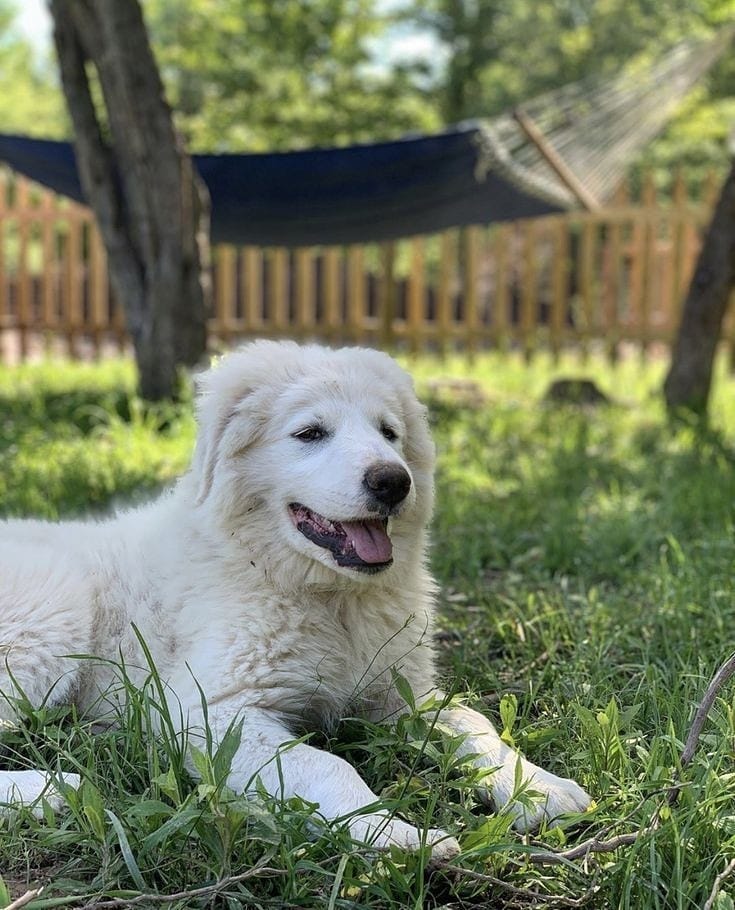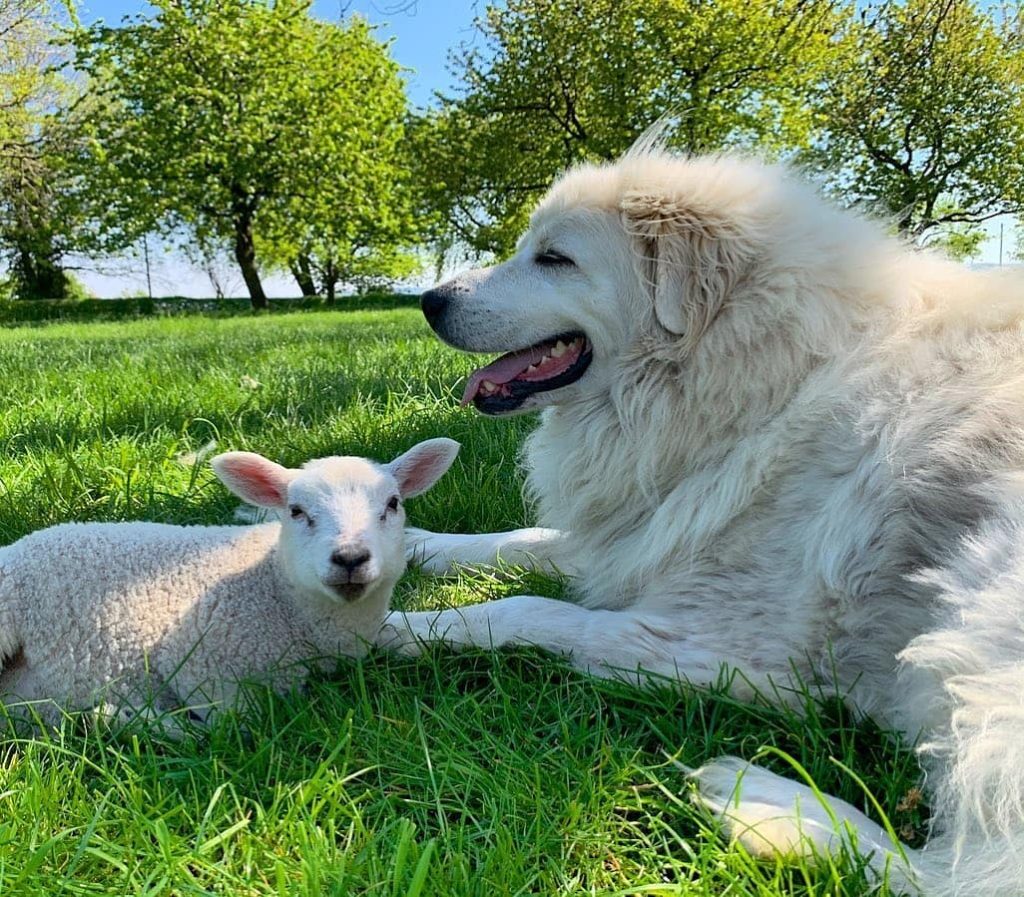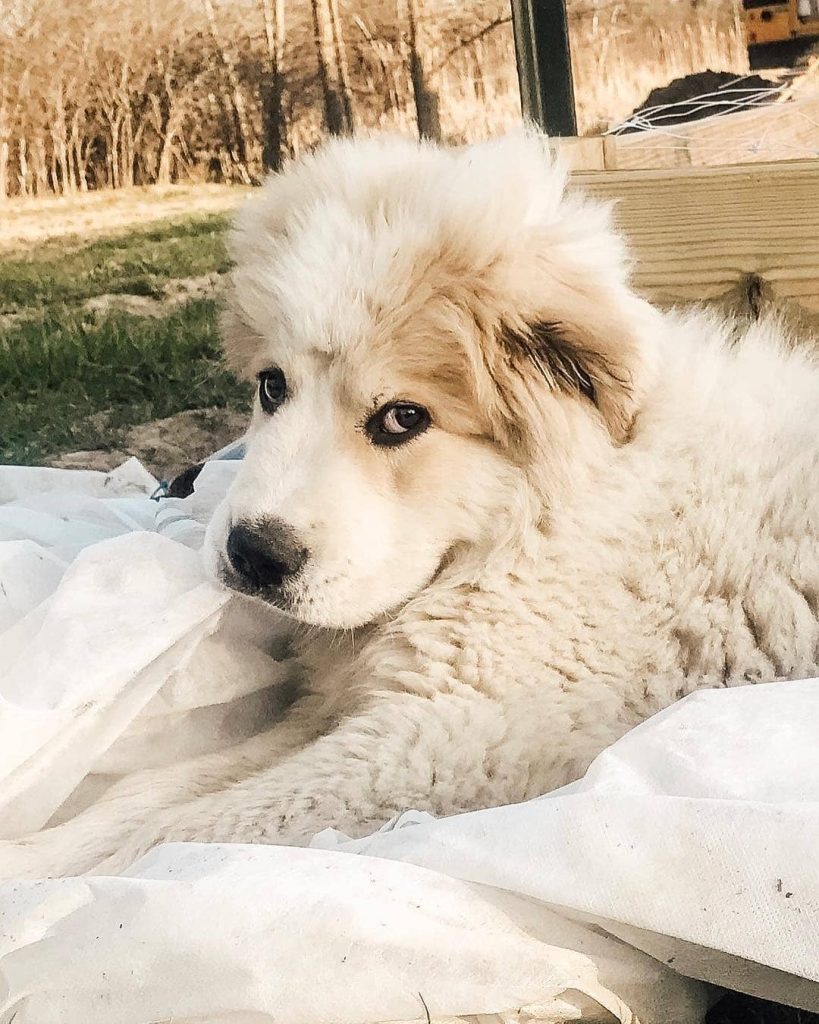Comprehensive Guide to Train Your Great Pyrenees
Training a Great Pyrenees requires a unique blend of patience, understanding, and consistency. Known for their majestic presence and protective nature, Great Pyrenees dogs are not just large but also personality. Their history as flock guardians in the Pyrenees Mountains has endowed them with a strong sense of independence and intelligence. However, this same independent streak can present challenges in training. This guide aims to provide detailed insights into the temperament and training needs of the Great Pyrenees.

Understanding the Great Pyrenees’ Temperament
The Great Pyr is known for its serene and protective nature. This breed exhibits a remarkable blend of strength and gentleness, making it a dependable family companion and an excellent guardian. Originating from the Pyrenees Mountains, these dogs were bred to protect livestock, which instilled a sense of independence and responsibility. They are intelligent, thoughtful, and can be willful, often requiring patience and understanding during training. Their protective instinct is strong, making early socialization crucial to help them distinguish between typical and threatening situations. Despite their large size, they are notably gentle, especially with children, and are known for their patient and calm demeanor.
The Importance of Your Attitude in Training
When training a Pyr, your attitude and approach are pivotal. This breed is susceptible to the tone of voice and body language. A calm, assertive, and patient demeanor is essential for successful training. Being consistent and firm, yet gentle, helps establish trust and respect between you and your dog. Avoid harsh discipline, which can be counterproductive, leading to fear or stubbornness. Instead, focus on building a positive and respectful relationship. Your patience and consistent leadership will encourage your dog to follow your lead and view you as a trustworthy guide in their training journey.
Positive Reinforcement: A Key to Successful Training
Positive reinforcement is crucial in training Great Pyrenees. This approach involves rewarding desired behaviors and encouraging the dog to repeat them. Rewards can be treats, praise, or physical affection. This breed responds well to positive reinforcement, building confidence and strengthening the bond between the dog and the owner. Avoid punishment-based methods, as they can lead to fear and mistrust. Instead, focus on rewarding good behavior and gently redirecting unwanted actions. Consistent use of positive reinforcement enhances the learning process and contributes to the overall well-being and happiness of your Great Pyrenees.
The Role of Mental Stimulation in Training Great Pyrenees
Mental stimulation plays a crucial role in the training and overall health of the Great Pyrenees. This breed, known for its intelligence and independent thinking, thrives on mental challenges. Including mental stimulation in their training routine helps prevent boredom and associated behavioral issues. Here are some ways to provide mental stimulation:
- Problem-Solving Games: Use puzzle toys that challenge them to solve problems to receive a reward.
- Training New Commands: Regularly teach new commands and tricks to engage their mind.
- Interactive Play: Engage in play involving physical activity and mental engagement, like hide and seek.
- Obedience Training: Regular obedience training help keep their minds active and focused.
- Scent Work: This breed has a good nose; games that involve scent tracking can be mentally stimulating.
- Environmental Enrichment: Introduce them to new environments and experiences to keep their training engaging and mentally enriching.
Establishing a Strong Training Foundation
A strong foundation in basic obedience is crucial for the Pyr. Start with fundamental commands such as ‘sit,’ ‘stay,’ ‘come,’ and ‘heel.’ Consistency is vital; practice these commands daily to reinforce learning. Early socialization is also essential to expose them to various people, animals, and environments. This helps in developing a well-rounded and well-behaved dog. Patience is essential, as this breed may take time to respond to commands due to their independent nature. A strong foundation sets the stage for more advanced training and a well-adjusted, obedient Great Pyrenees.
Practical Training Techniques for Great Pyrenees Breed

Training a Great Pyrenees can be a rewarding experience when the proper techniques are employed. Due to their distinct personality and temperament, traditional training methods may only sometimes be effective. This section provides practical training techniques for the Great Pyrenees, ensuring a more prosperous and enjoyable training experience for you and your dog.
1. Selecting Effective Command Words
When training a Great Pyrs, the choice of command words is crucial. These should be simple, distinct, and consistently used. Here are some guidelines for selecting command words:
- Short and Simple: Choose words that are short and easy to remember, such as ‘Sit,’ ‘Stay,’ ‘Come,’ and ‘Heel.’
- Unique Sounds: Use words distinct from everyday conversation to avoid confusing the dog.
- Consistent Use: Everyone in the household should use the exact words for commands to avoid confusing the dog.
- Positive Tone: Use a clear, upbeat tone to encourage compliance.
- Command Variations: For different behaviors, select words that are not similar sounding, like ‘Down’ for lying down and ‘Off’ for getting off furniture.
2. Starting Training in a Controlled Environment
Begin training your Great Pyrenees in a controlled environment where distractions are minimal. This allows your dog to focus on you and the commands being taught. A quiet room or a fenced yard is ideal. Start with short sessions, gradually increasing the duration as your dog becomes more comfortable and focused. Consistent training in a familiar environment helps build confidence and a foundation for learning before introducing more challenging scenarios.
3. Gradually Increasing Challenges: Distance and Distractions
Once your dog responds reliably in a controlled environment, it’s time to introduce new challenges. Gradually increase the level of difficulty by:
- Adding Distance: Start giving commands from a greater distance, enhancing their response over longer ranges.
- Introducing Controlled Distractions: Begin with mild distractions and gradually increase the level, teaching your dog to focus on you despite interruptions.
- Varying Environments: Train in different locations to generalize their accordance across various settings.
- Increasing Session Duration: Lengthen the sessions to improve their concentration and stamina.
4. Making Training Engaging and Rewarding
Keep training engaging and enjoyable for your Great Pyrenees. This breed can become bored with repetitive or monotonous tasks. Incorporate games and fun activities into training sessions. Reward success with treats, praise, or playtime. Be creative in your training approach, using a mix of obedience, agility, and play to maintain their interest. Regularly changing the routine and introducing new tricks and commands can keep your dog’s sessions fresh and exciting.
5. The Use of Training Tools and Equipment
Various training tools and equipment can enhance the training experience for your Great Pyrenees. When used correctly, these tools can aid in effective communication and control. Here are some helpful training tools:
- Leashes and Harnesses: A sturdy leash and a well-fitting harness are essential for control and safety.
- Clickers: Clicker training can be efficient for marking desired behaviors immediately.
- Treat Pouches: These are convenient for carrying treats during training sessions.
- Long Lines: Long lines help practice commands at a distance and recall training.
- Puzzle Toys: Engage their mind and keep them entertained while reinforcing learned behaviors.
- Agility Equipment: Use agility equipment to combine physical exercise with obedience training.
You can develop a well-behaved and responsive Great Pyrenees by employing these practical training techniques. Patience and consistency are vital in training this independent and intelligent breed. Tailoring your training methods to suit their unique personality and needs will lead to a more harmonious and rewarding relationship with your dog.
Advanced Training Strategies and Considerations

Moving beyond basic obedience to more advanced training can be challenging and rewarding when training Pyrs. This section delves into advanced training strategies and particularly practical considerations for this breed. Advanced training enhances the dog’s skills and strengthens the bond between the dog and the owner.
1. Consistency and Patience in Training
Consistency and patience are the cornerstones of advanced training for Great Pyrenees. Due to their independent nature, this breed may require more repetition and patience to master advanced commands. Consistently reinforcing training rules and routines is essential. Training sessions should be regular and predictable, with clear and consistent commands. Patience is crucial, as progress may be gradual. Understanding and respecting the breed’s learning pace is critical to successful advanced training.
2. Regular Practice of Recall Commands
Recall commands are vital for any dog’s safety and are particularly important for a breed as independent as the Great Pyrenees. Regular practice of recall commands ensures that your dog will return to you reliably, even in distracting situations. Here are steps to enhance recall training:
- Start in a Controlled Environment: Start practicing recall commands in distraction-free areas.
- Gradually Introduce Distractions: Slowly introduce more distractions as your dog responds more quickly.
- Use High-Value Rewards: Offer treats or toys that your dog finds irresistible as a reward for obeying the recall command.
- Incorporate Recall into Daily Activities: Use recall commands to reinforce their importance during everyday activities.
- Never Punish on Recall: Ensure that returning to you is always a positive experience for your dog.
3. Implementing Long Leash Training Techniques
Long leash training effectively teaches Great Pyrenees to respond to commands from a distance. This method gives the dog a sense of freedom while still under control. Steps for practical long leash training include:
- Choosing the Right Equipment: Use a sturdy, comfortable long leash that allows for a gradual increase in distance.
- Start with Basic Commands: Begin with commands your dog knows, like ‘sit’ or ‘stay.’
- Gradually Increase Distance: Slowly extend the distance from which you give commands.
- Practice in Different Environments: Train in various settings to generalize the behavior.
- Combine with Recall Training: Use long leash training to enhance recall command practice.
4. Seeking Professional Training Guidance Online
Seeking professional guidance can be highly beneficial, especially for advanced training or specific behavioral issues. Online training resources offer the convenience of accessing expert advice from home. Below is a table outlining considerations when seeking online training guidance:
| Factor | Description |
| Expertise | Look for trainers with experience specifically with Great Pyrenees or similar breeds. |
| Training Philosophy | Ensure their training methods align with positive reinforcement principles. |
| Reviews and Testimonials | Check reviews or testimonials from other clients to gauge effectiveness. |
| Customization | Seek trainers who offer personalized advice tailored to your dog’s specific needs. |
| Accessibility | Consider the ease of accessing the training material and the trainer’s consultation availability. |
| Cost: | Evaluate the cost relative to the quality and depth of the guidance provided. |
Incorporating these advanced training strategies and considerations can further enhance your Great Pyrenees’ training, leading to a more fulfilling and harmonious relationship. Advanced training improves obedience, provides mental stimulation, and strengthens the bond between you and your dog.

Addressing Common Questions and Concerns
When it comes to training and caring for Great Pyrenees, pet owners often have specific questions and concerns. Addressing these common issues ensures the dog’s well-being and harmonious coexistence with its human family. This section aims to provide clear and informative answers to some of the most frequently asked questions related to the Great Pyrenees.
1. Managing Barking in Great Pyrenees
Barking is a natural behavior for the Great Pyrenees, often used as a means of communication or as part of their guarding instincts. However, excessive barking can become problematic. Here are strategies to manage barking:
- Understand the Cause: Identify why your dog is barking. Common reasons include alerting to danger, boredom, seeking attention, or responding to environmental triggers.
- Provide Adequate Exercise: Ensure your Great Pyrenees get enough physical and mental exercise. A well-exercised dog is less likely to bark excessively.
- Training: Teach your dog a ‘quiet’ command. When they bark, say ‘quiet’ in a calm, firm voice. Once they stop barking, reward them with a treat or praise.
- Avoid Punishment: Do not yell or punish your dog for barking, as this can increase anxiety-related barking.
- Socialization: Proper socialization can reduce fear-based barking at unfamiliar people or animals.
- Environmental Management: Minimize exposure to stimuli that trigger barking, such as keeping them inside during high-traffic times.
2. Optimal Age for Spaying Female Great Pyrenees
Determining the optimal age for spaying a female Great Pyrenees should involve a discussion with your veterinarian, considering the dog’s health and lifestyle. General guidelines suggest spaying before the first heat cycle, which can occur as early as six months of age, to reduce the risk of specific health issues like mammary tumors. However, some recent studies suggest waiting until after the first heat cycle or until the dog is fully grown, especially in large breeds, to ensure proper physical development. Each case is unique, and the decision should be made based on the individual dog’s health and the owner’s situation.

3. Optimal Age for Neutering Male Great Pyrenees
The optimal age for neutering a male Great Pyrenees also varies. Traditional recommendations often suggest neutering between six and nine months of age. However, like with females, newer research indicates that waiting until the dog has reached full physical maturity can be beneficial, especially for larger breeds. Waiting until one to two years old may help ensure proper growth and development. As with spaying, the decision to neuter and the timing should be based on a comprehensive assessment of the dog’s health, behavior, and lifestyle needs in consultation with a veterinarian.
